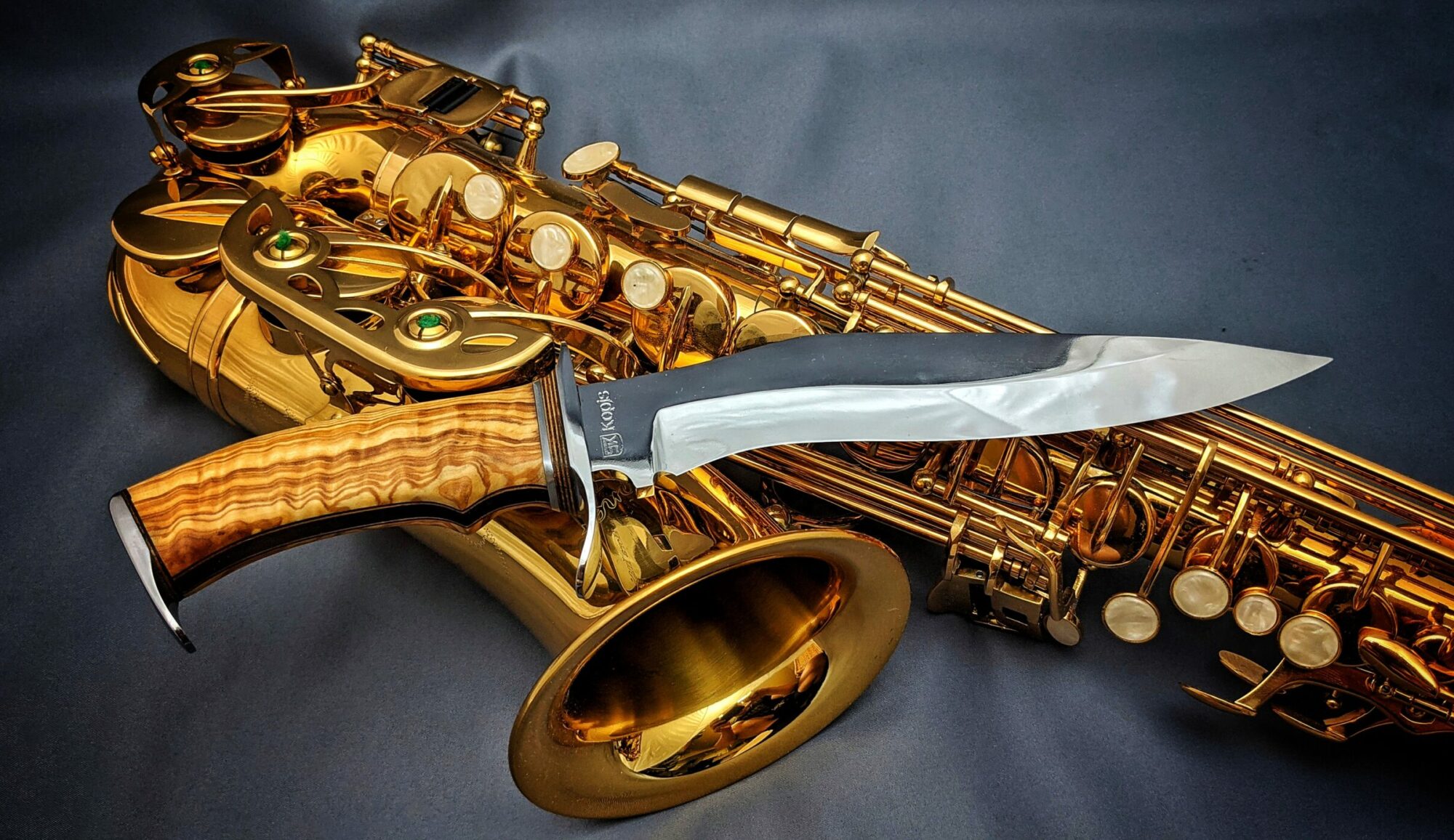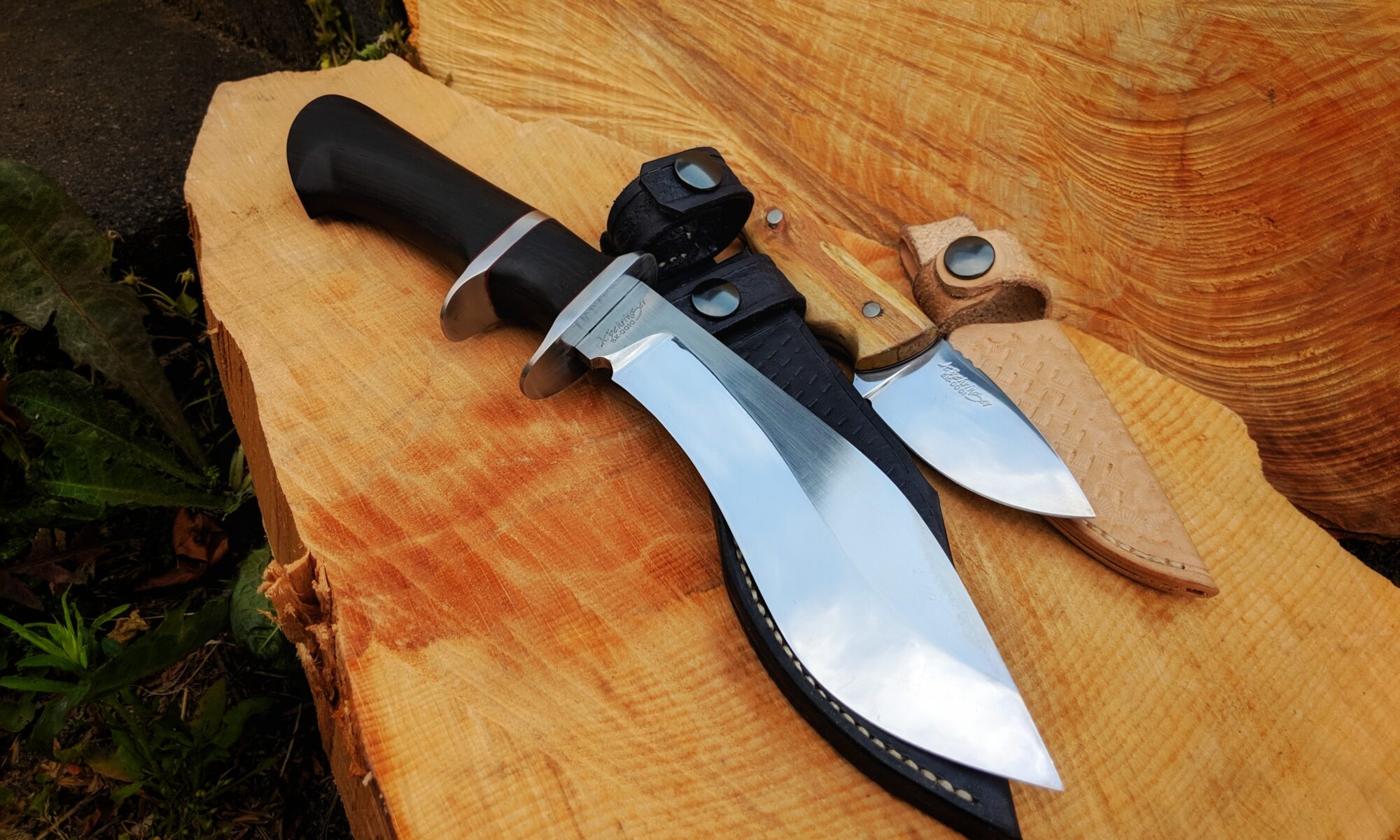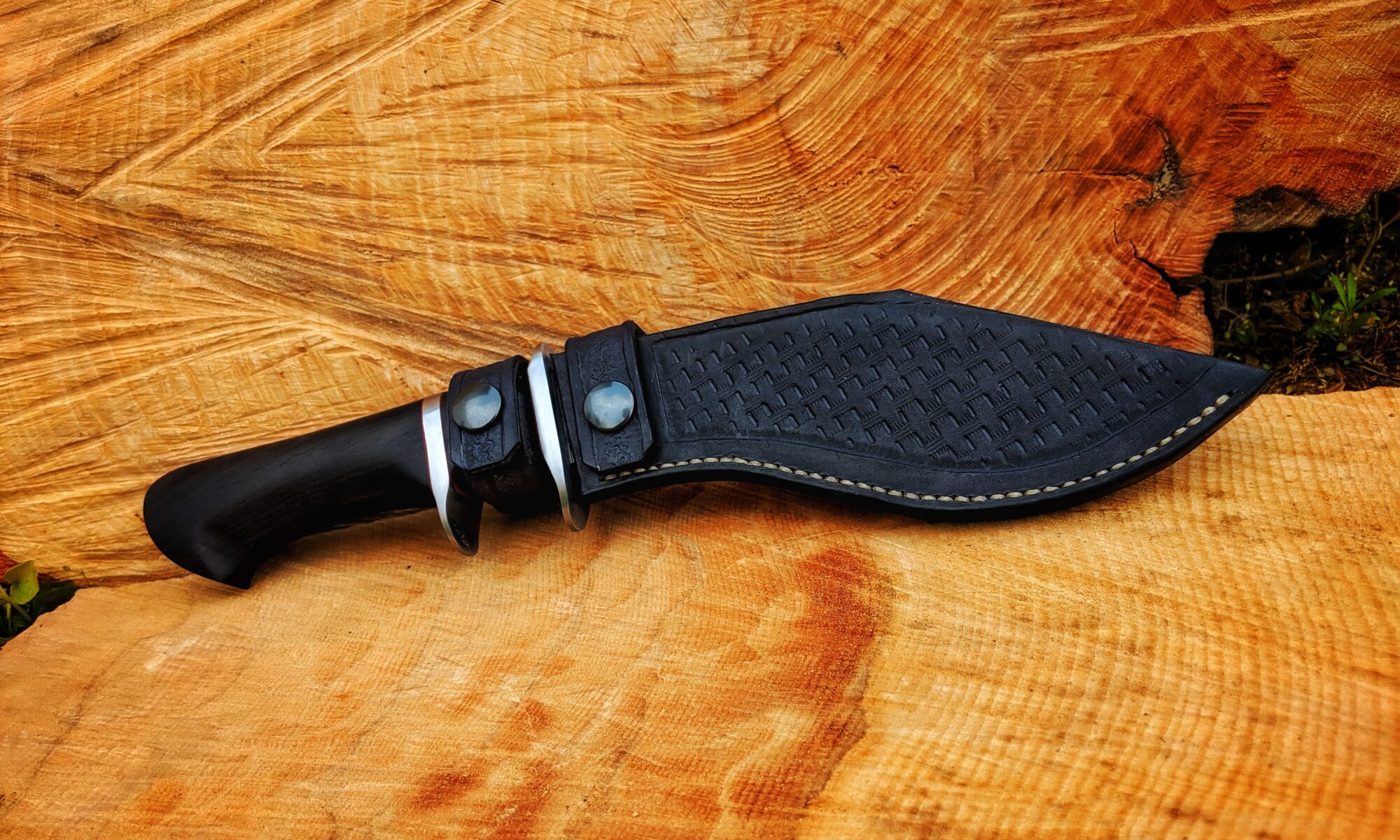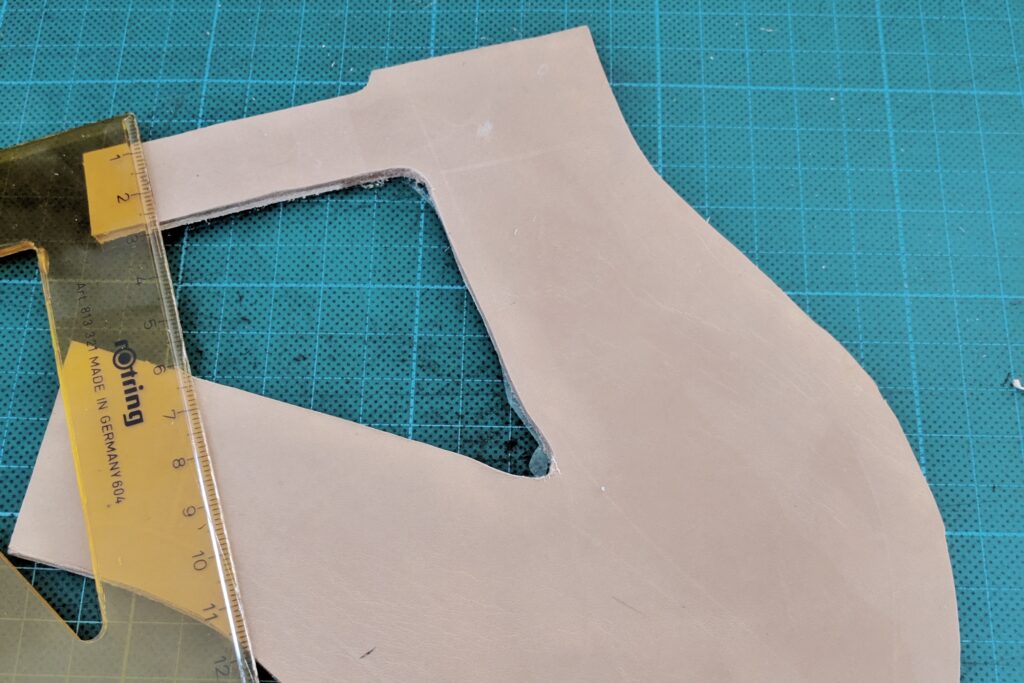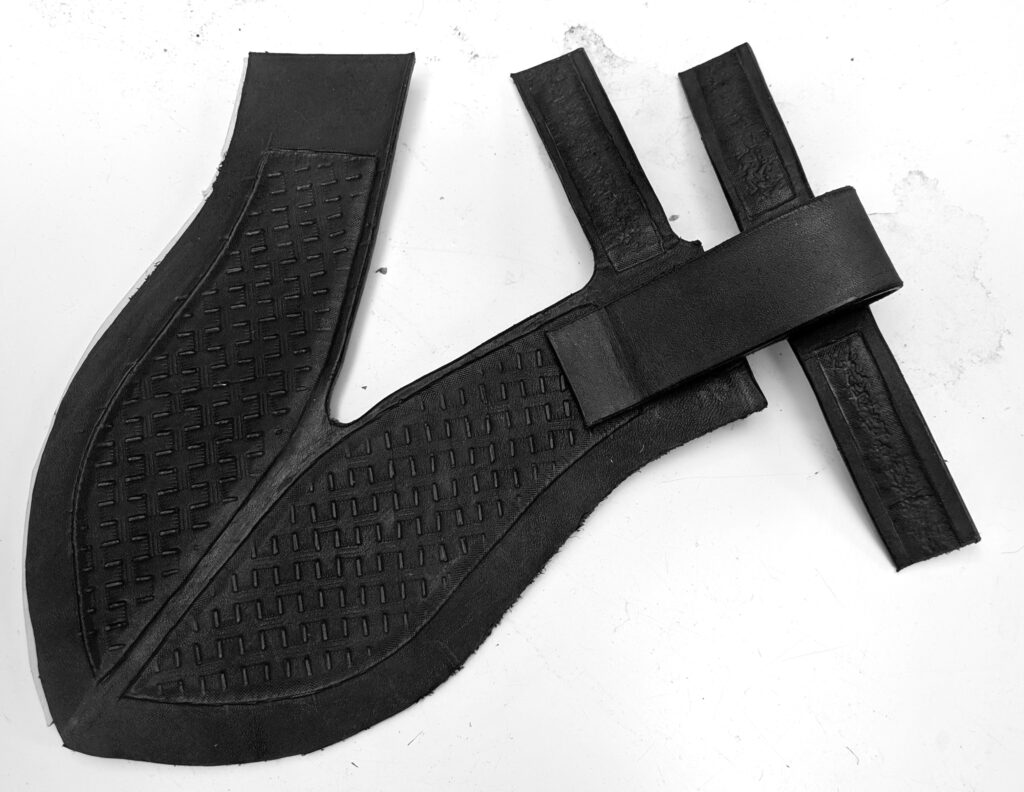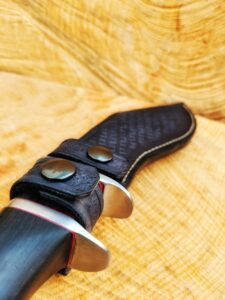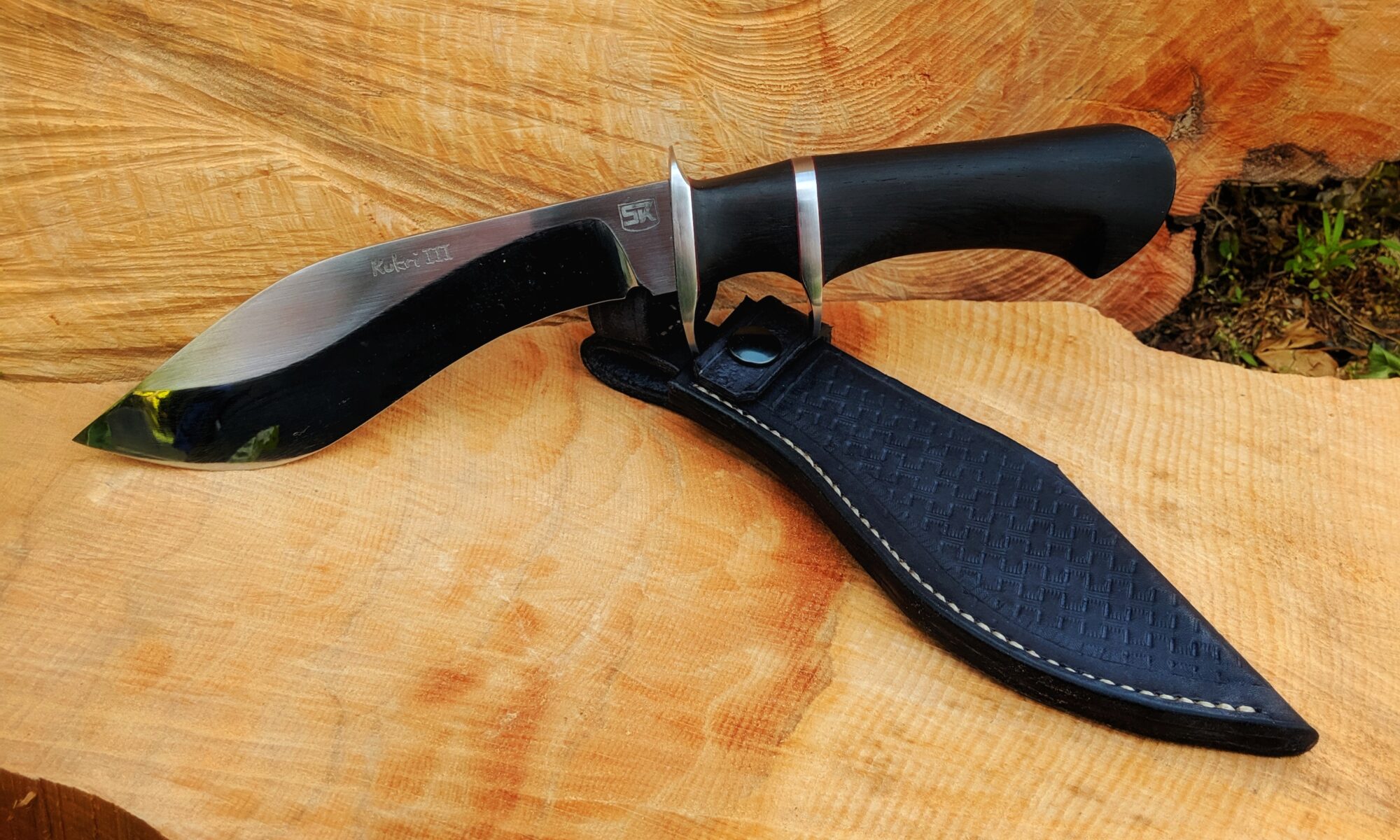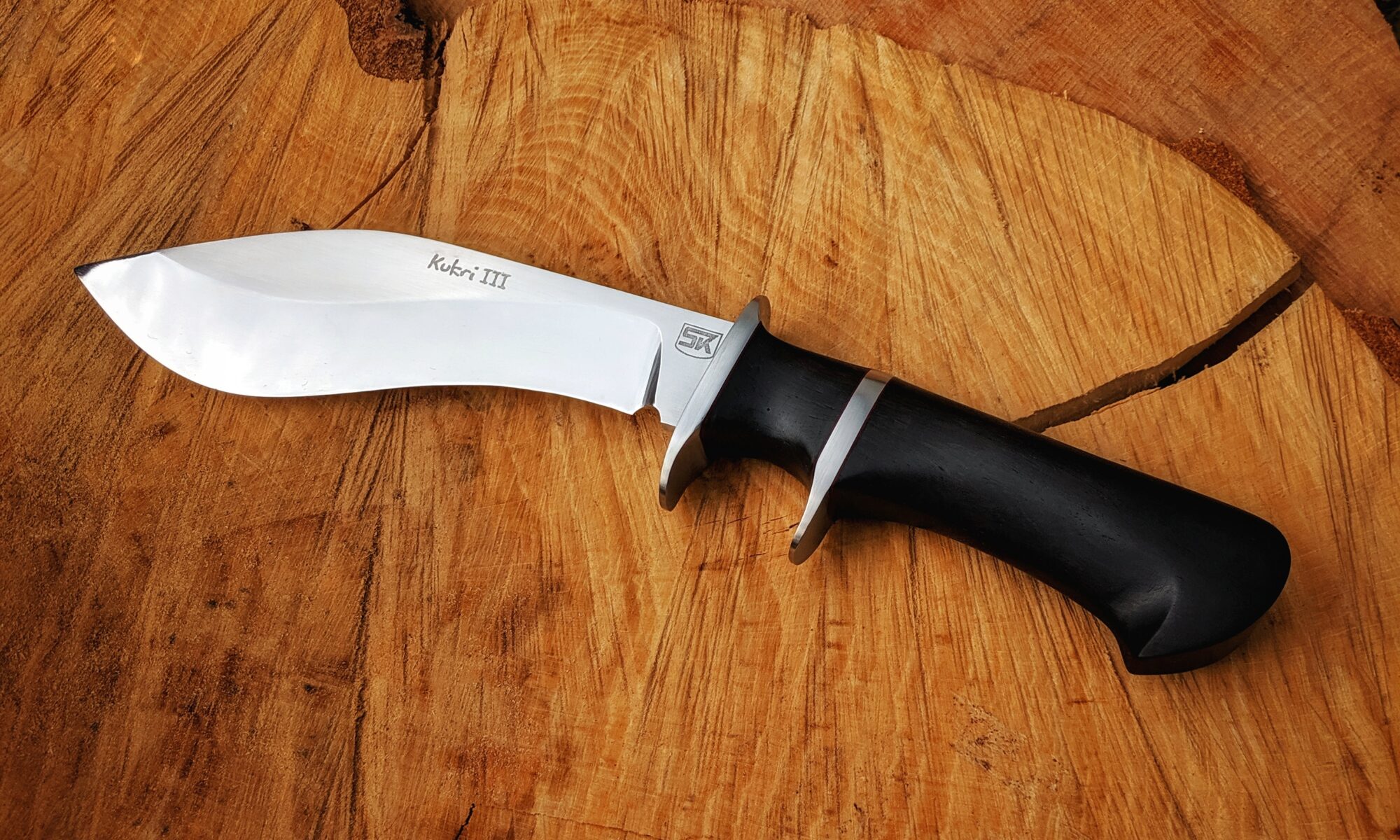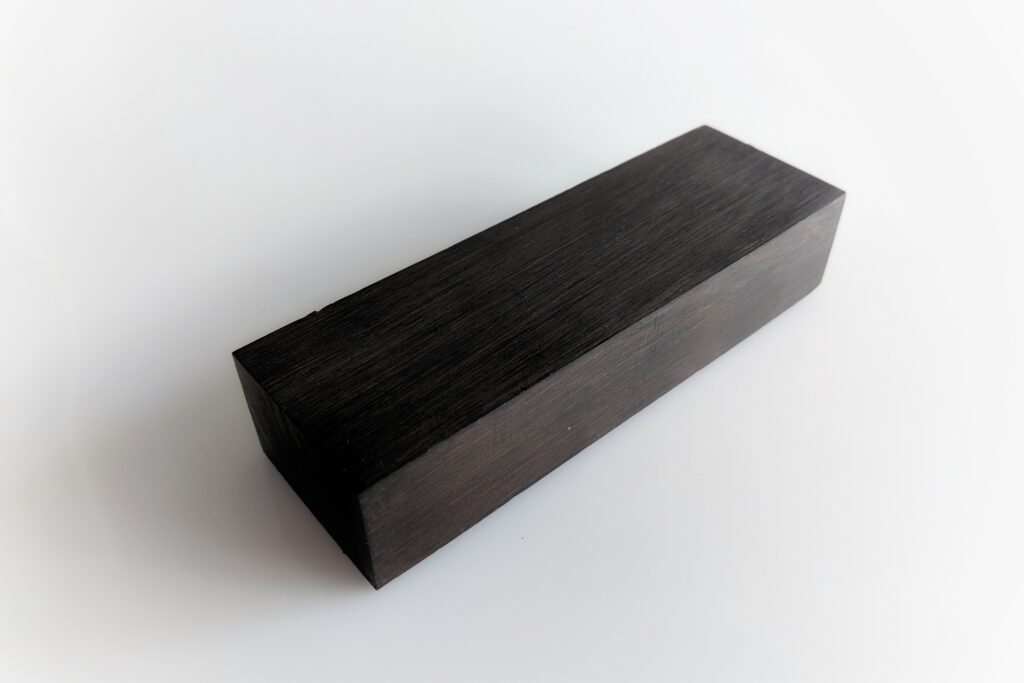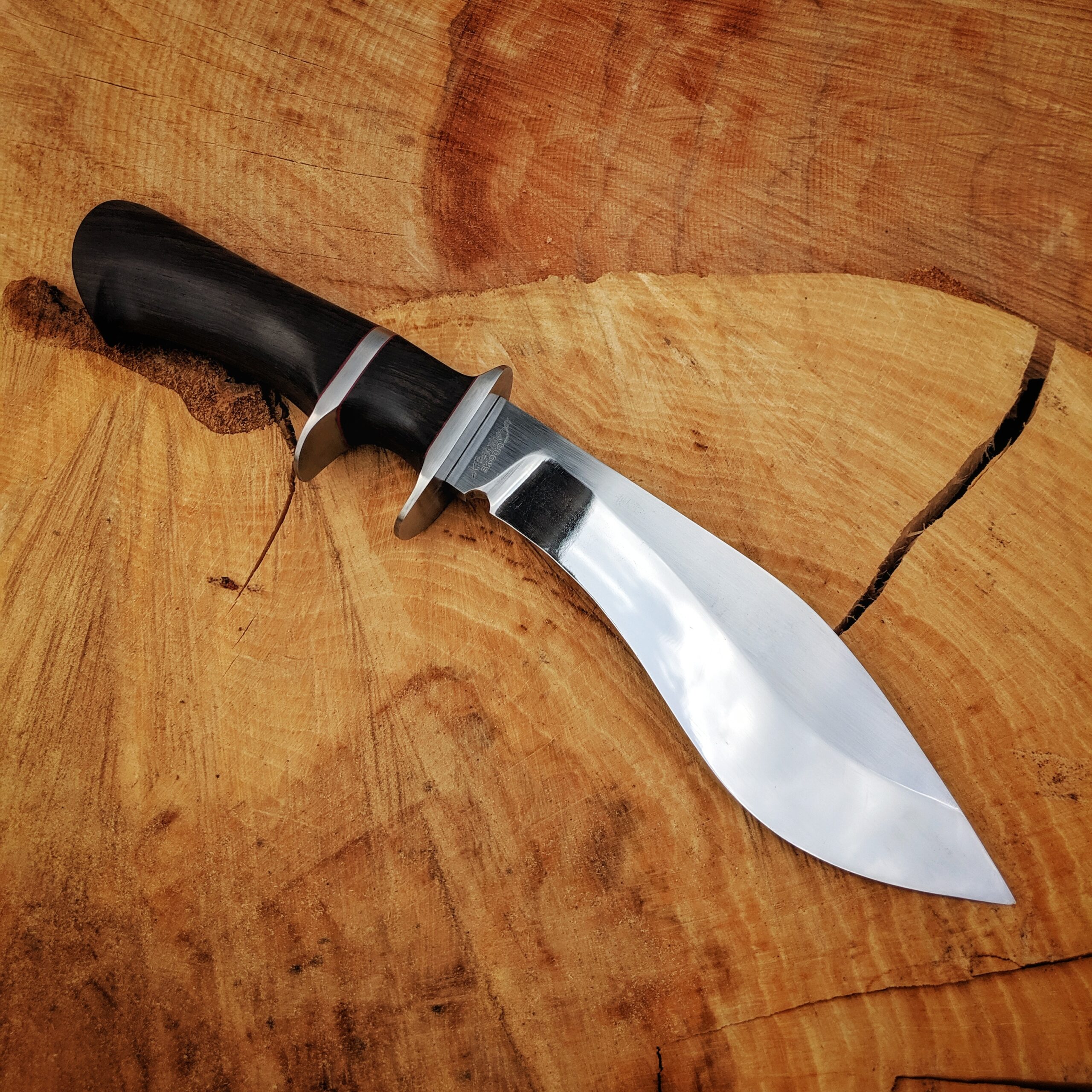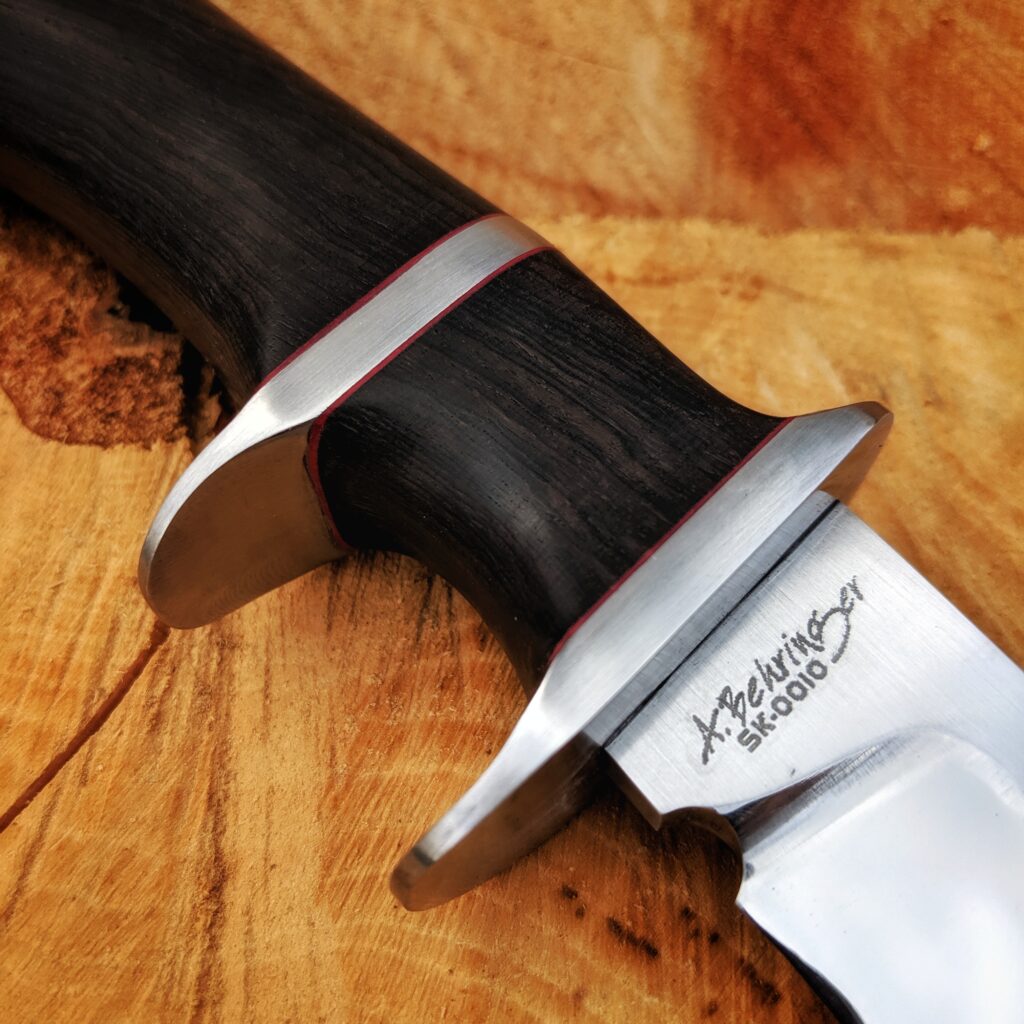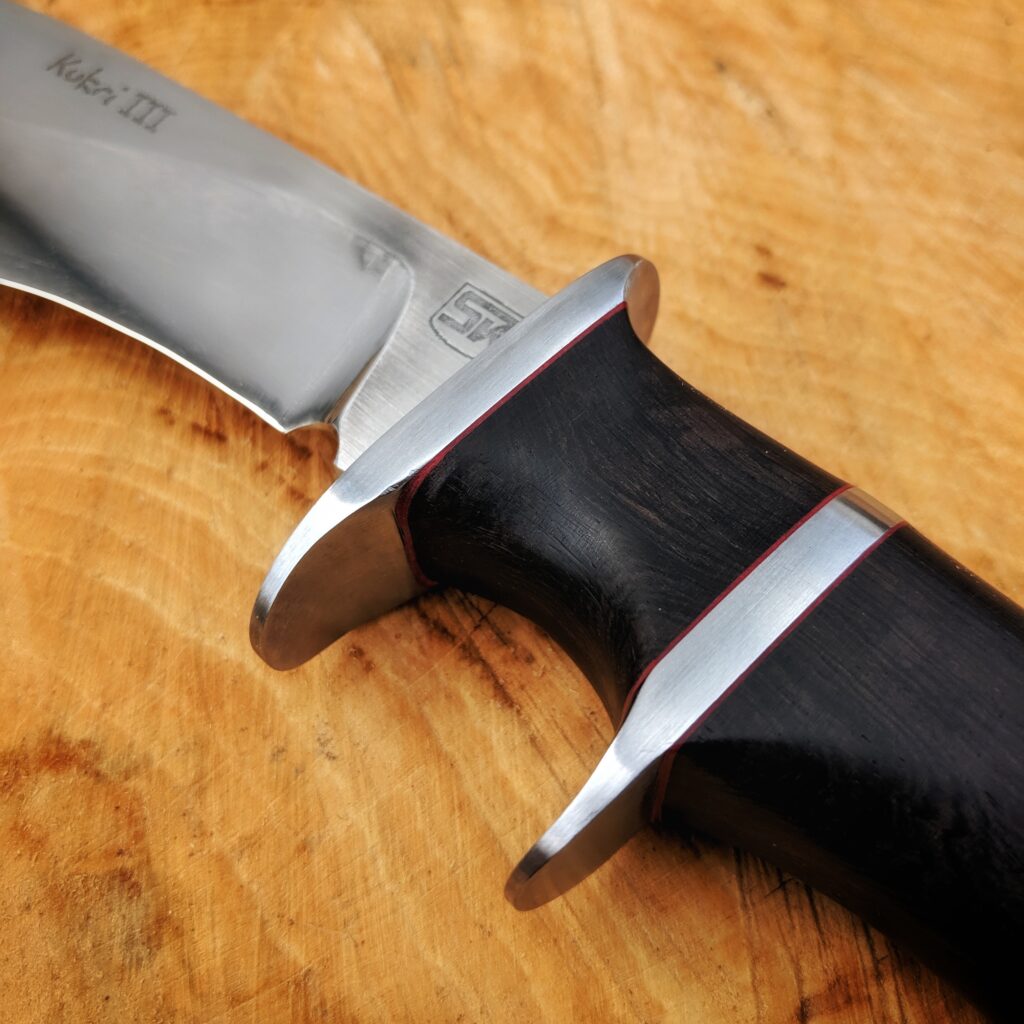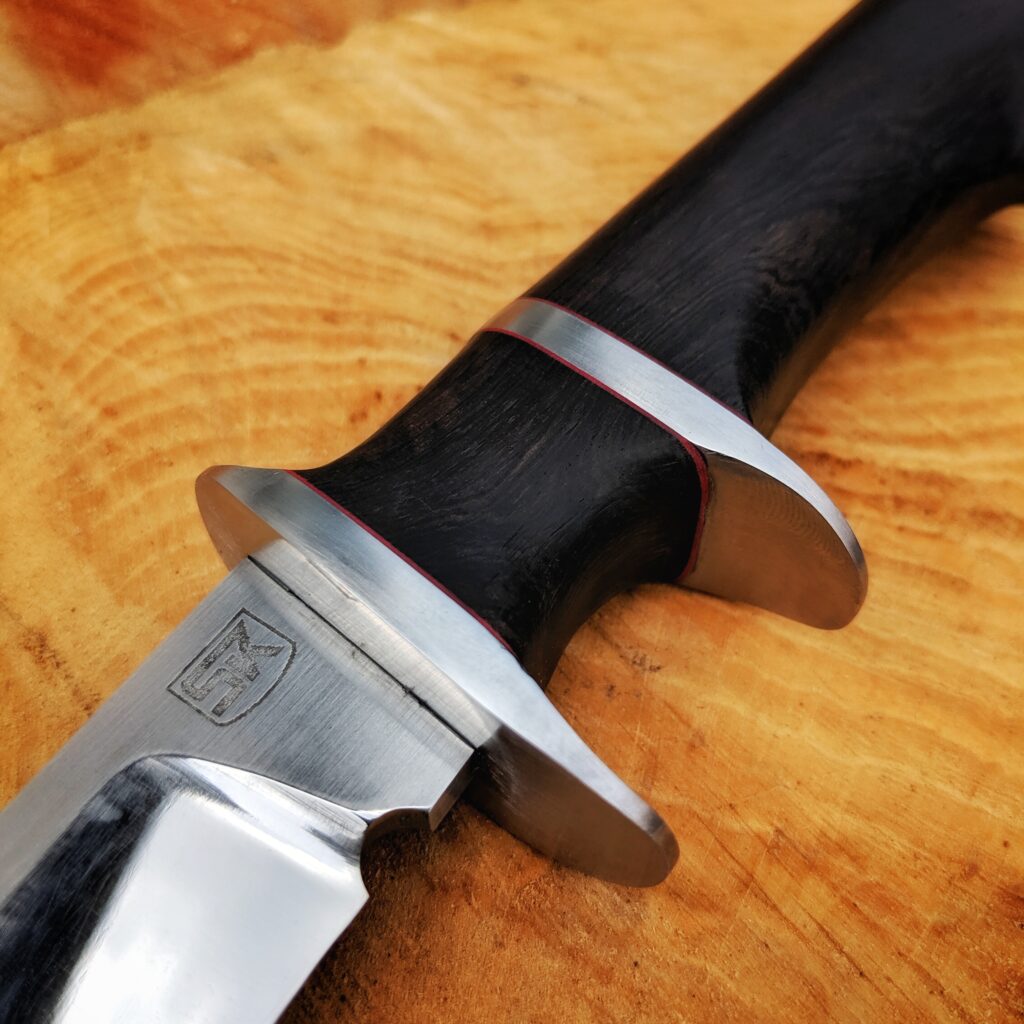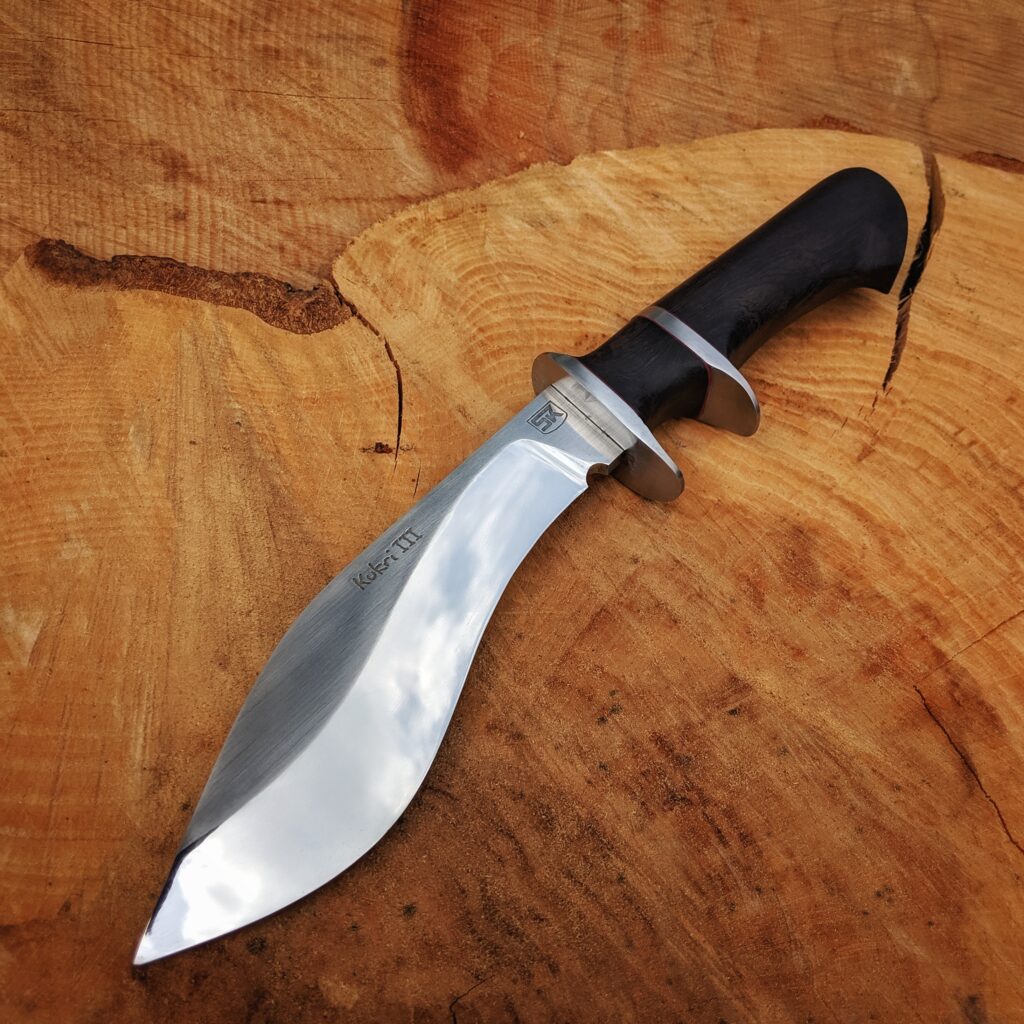I just finished my tenth knife and it is here in front of me on my desk together with its polished leather sheath. I started making knives last year in October 2018. For my birthday I got my little belt grinder where I did all ten knives on. I tried out my first knife shape, that I quickly drew on a piece of aluminum, just to get a feeling. This was the birth of my first knife that I know call the Signature blade, my EDC.
I think it is a good time to take a quick look over my shoulder and summarize what happened so far.
The journey and pace is breathtaking on one side and slow and relaxing on the other Side
I learned an insane amount of techniques: cutting steel to the desired shape, hardening and heat-treating it, full and hidden tang constructions, making guards and sub hilt style handles, laminating my own paper micarta, working with expensive woods, glueing everything tightly together, surface finishes of the blades and the handles, making my own handle scales out of wood I salvaged in our garden, leatherworking, saddle-stitching, edge burnishing, and so much more in the details and how to do these things correctly. That is breathtaking and there is so much more to learn.
What was breathtaking too is the work together with my friend and first customer Joe from the US. He helped me push the borders of what I can do and push myself harder to get a better and professional result out of my work. Perfect is just good enough for me. Thank you for that and all your support Joe.
The first ten knives were just a start. The good news is: I get more and more inquiries about custom knives. I am very happy about this and it is an indication that the knives I make are good. Unfortunately what I also learned from that is, that the people have no idea what it means to put 20 or more hours into a single handmade product. Some are really astonished when we start talking about prices. Not bearing in mind I have to pay for materials, tools, and machines and till then I did not even earn any money.
And then there is the slow and relaxing part of knifemaking. Designing blades, putting them in steel, hardening, hand sanding, handle sculpting and finally having a finished product in hand to admire – that is satisfying and a relief. That’s why I don’t let anyone rush me. That is what I love so much.
Another awesome part of this work is the knife community all over the world. I am especially active on my Instagram account and the support and help, the appreciation, the communication with similarly interested people all over the world is a great experience.
My main goal is to keep the passion I feel for what I am doing. To find the perfect balance between pushing myself and enjoying my time.
I am planning to split up my work in the future in two different ways of making business:
- My main part of work will be building knives and trying out new things as they cross my path and putting the knives on stock/display.
- The other part will be fully customized knives where the buyer has the option to influence every detail – as far as technically possible for me. This
I’m planning a third way – so far just an idea in my head. If I have come to a conclusion, I will publish it here. So stay tuned I like the idea.
